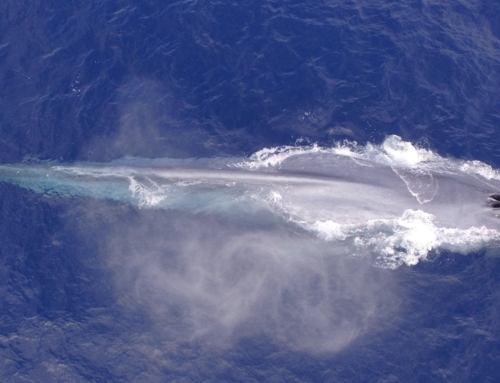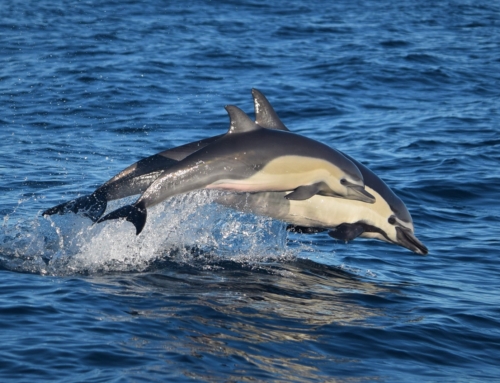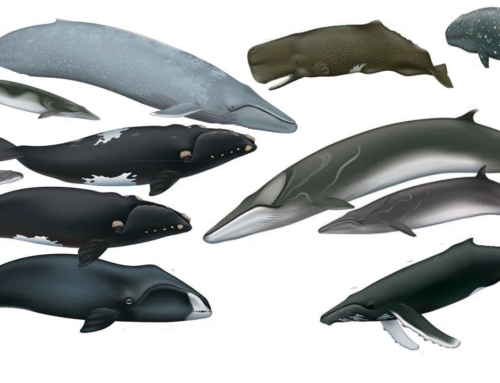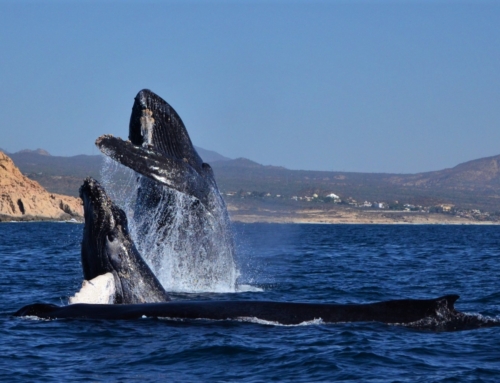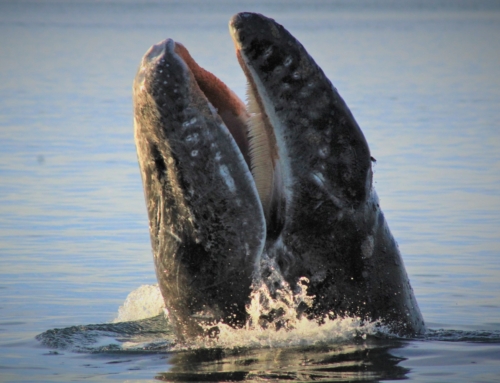The Cabo San Lucas Whale migration for the 2014 Whale watching season has been wonderful, and yet quite different this year. This is due largely to the climactic differences in the marine environment that ‘El Nino’ has brought to the area. So while the Humpback Whales have been seen and identified in record numbers, the Gray Whales have been more elusive. This seems to follow the trend set every ‘El Nino’ year as the Cabo San Lucas Whale migration for Gray Whales does seem to depend on water temperatures.
While Cabo San Lucas is not only a winter home base for a large portion of the North Eastern Pacific Humpback population during migration, it is also the hub of the Humpback Whale Super Highway. So if you can imagine, all of the Humpbacks from the North Eastern Pacific Humpback population that spend winter along the coast of North and Central America pass down the Baja and the largest percentage of these Humpbacks pass through Cabo San Lucas.
From Cabo San Lucas these whales will continue their migration to their various home wintering areas; from the Northern Sea of Cortez south to Panama – special mention to our sister company in Puerto Vallarta – Whale Watch Vallarta and the spectacular season they are having!
Of course this means that here in Cabo San Lucas, during the month of December we see many Humpbacks migrating past to their final wintering areas and during late March and early April we again see many Humpbacks migrating through Cabo San Lucas on their way to their summer feeding grounds to the North (California, B.C. and Alaska).
This makes Cabo a very special place to witness the Humpback Whale migration, their wintering habits (mating, giving birth and nursing their new borns) and also this means Cabo San Lucas has the longest season for Whale watching of all the ‘wintering destinations’ for the North Eastern Pacific Humpback population.
Now – as for the elusive Gray Whales! Typically, the Gray Whales enter the many bays and lagoons along the Pacific Coast of the Baja peninsula. It is in these protected bays and lagoons the mother Gray Whale gives birth to her baby. It is also where the majority of Gray Whales spend the winter.
Cabo San Lucas is the southern range of the Gray Whale migration every year. So while the mothers and babies are further north along the Baja, we often encounter small groups of Gray Whales here in Cabo as well. This year the Gray Whale migration to Cabo San Lucas has been very limited with Gray Whales not being seen until late January and sporadically since then.
This does make sense, considering that the Gray Whale spends much of its time in the very cold Polar waters around Alaska and the southern Arctic – they do not seem drawn to Cabo as much during ‘El Nino’ years when the water temperatures here in Cabo are as much as 20 degrees warmer than usual.
So that wraps up the overview of the 2014 Cabo San Lucas Whale Migration. Record numbers of Humpback Whales, lots of baby Humpbacks and adult Gray Whales migrating to Cabo San Lucas in low numbers. March is just around the corner though, and typically the ‘El Nino’ effect drops off at this time, so we shall see what March brings in terms of whales migrating to Cabo San Lucas.


